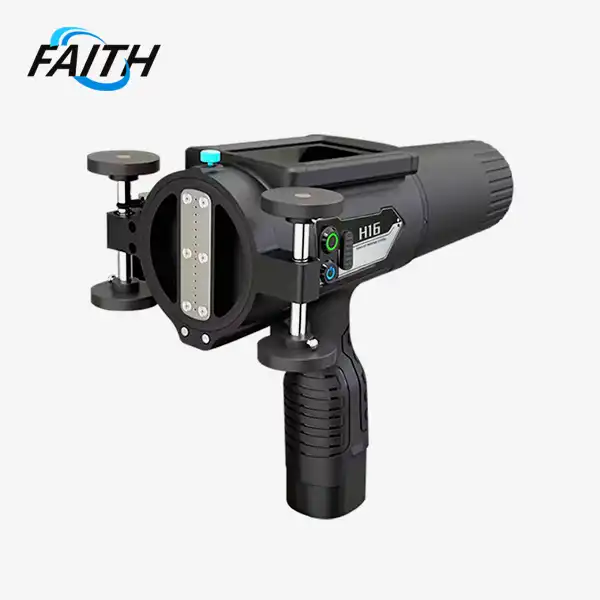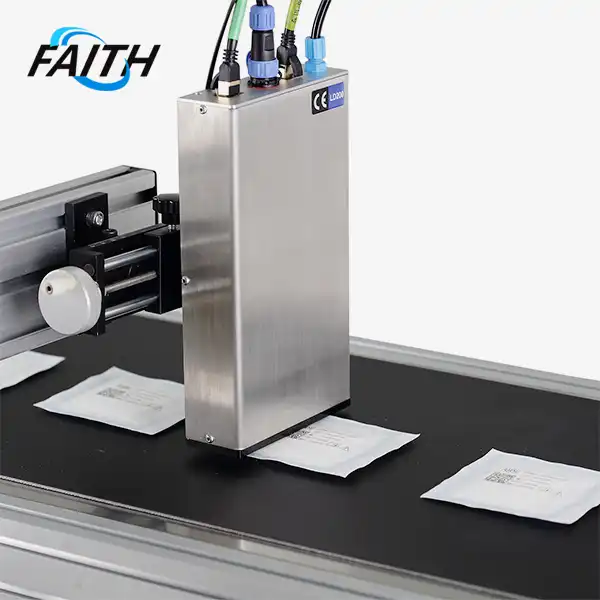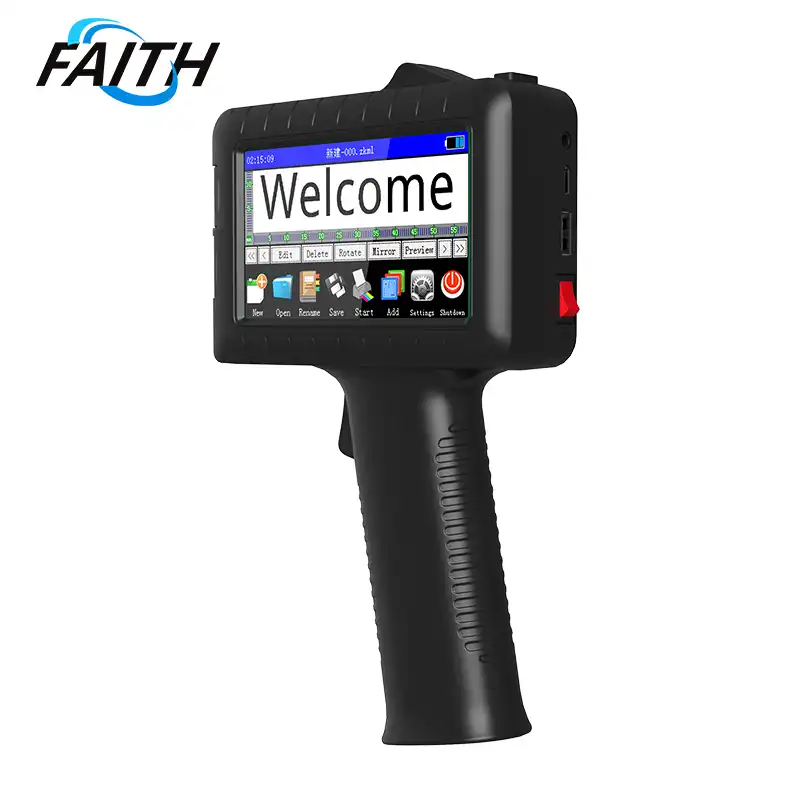Choosing the Right Inkjet (PIJ) Printer: Key Factors to Consider for Your Business
In today's fast-paced business environment, selecting the appropriate printing technology can significantly impact your operational efficiency and output quality. Inkjet (PIJ) printers have emerged as a versatile solution for various industries, offering high-quality prints and cost-effective operations. This guide will explore the crucial factors to consider when choosing an Inkjet (PIJ) printer for your business needs.
Comprehending the Technology: How Inkjet (PIJ) Printers Work
Inkjet (PIJ) printers, or Piezoelectric Inkjet printers, utilize advanced technology to deliver precise and high-quality prints. These printers work by using piezoelectric crystals that vibrate when an electric current is applied, forcing ink droplets through tiny nozzles onto the printing surface. This technology allows for exceptional control over ink placement, resulting in sharp, clear images and text.
One of the main advantages of Inkjet (PIJ) printers is their ability to work with a diverse range of ink types, such as solvent-based, UV-curable, and specialized inks for specific uses. This flexibility makes them ideal for various industries, including packaging, labeling, and industrial marking and coding, offering tailored solutions for different applications while ensuring high-quality results across different materials.
Moreover, Inkjet (PIJ) printers often incorporate cutting-edge features that enhance their performance and reliability. For instance, anti-precipitation technology helps maintain consistent print quality by preventing pigmented inks from settling, which is particularly beneficial when using white ink or other heavily pigmented formulations. This feature not only ensures superior print results but also simplifies maintenance procedures, reducing downtime and operational costs.
Evaluating Your Business Needs: Matching Printer Capabilities to Requirements
When selecting an Inkjet (PIJ) printer, it's crucial to align the printer's capabilities with your specific business requirements. Consider the following aspects:
Print Volume and Speed: Assess your daily print volume and required throughput. High-volume operations may necessitate printers with faster print speeds and larger ink capacities to maintain productivity. Look for printers that offer intelligent ink management systems, allowing for ink refills without interrupting production, thus maximizing uptime.
Print Quality and Resolution: Different applications demand varying levels of print quality. For instance, high-resolution product labeling may require printers capable of producing fine details and small text, while industrial marking might prioritize durability over intricate designs. Evaluate the printer's resolution capabilities and ensure they meet your quality standards.
Substrate Compatibility: Consider the materials you'll be printing on. Inkjet (PIJ) printers can accommodate a wide range of substrates, including paper, plastics, metals, and even curved surfaces. Ensure the printer you choose is compatible with your specific substrate requirements.
Environmental Conditions: Industrial environments can be challenging for printing equipment. Look for Inkjet (PIJ) printers designed to withstand harsh conditions, such as dust, humidity, or temperature fluctuations. Robust construction and protective features can significantly extend the printer's lifespan and maintain consistent performance.
Integration and Connectivity: In modern manufacturing and packaging environments, seamless integration with existing systems is paramount. Evaluate the printer's connectivity options, including network capabilities, data transfer protocols, and compatibility with your current software ecosystem. Advanced Inkjet (PIJ) printers often offer features like remote monitoring and diagnostics, enhancing overall operational efficiency.
Maximizing ROI: Long-term Considerations for Inkjet (PIJ) Printer Selection
While initial costs are important, the true value of an Inkjet (PIJ) printer lies in its long-term performance and total cost of ownership. Consider these factors to ensure a sound investment:
Maintenance and Reliability: Look for printers with built-in features that simplify maintenance and enhance reliability. For example, automatic cleaning cycles, one-key emptying functions for easy ink changes, and fault detection systems can significantly reduce downtime and maintenance costs. These features not only save time but also extend the life of critical components like print heads.
Ink Efficiency and Costs: Ink consumption can be a significant ongoing expense. Evaluate the printer's ink efficiency, considering factors like droplet size control and ink recirculation systems. Some advanced Inkjet (PIJ) printers offer precise ink squeezing control, which can extend nozzle life and optimize ink usage, leading to substantial savings over time.
Scalability and Future-proofing: As your business grows, your printing needs may evolve. Choose a printer that offers scalability, either through modular designs that allow for upgrades or through software updates that can enhance functionality over time. This approach ensures your investment remains valuable as your business expands.
Support and Service: Reliable technical support and service can make a significant difference in minimizing downtime and resolving issues quickly. Consider the manufacturer's reputation for customer support, availability of local service technicians, and the comprehensiveness of warranty and service agreements.
Environmental Impact: With increasing focus on sustainability, consider the environmental footprint of your chosen printer. Look for energy-efficient models and those that minimize waste through features like precise ink control and recyclable components. Some manufacturers offer eco-friendly ink options, which can be a valuable selling point for environmentally conscious businesses.
Conclusion
In conclusion, selecting the right Inkjet (PIJ) printer for your business involves carefully evaluating your specific needs against the printer's capabilities, long-term costs, and overall reliability. By considering factors such as print quality, substrate compatibility, maintenance requirements, and future scalability, you can make an informed decision that enhances your operational efficiency and supports your business growth.
For expert guidance on choosing the best Inkjet (PIJ) Printers for your specific industrial UV inkjet coding and traceability system needs, don't hesitate to reach out to our team of specialists. Contact us at sale01@sy-faith.com to explore how our innovative solutions can elevate your printing capabilities and drive your business forward.
References
1. Johnson, R. M. (2022). Industrial Inkjet Printing Technology: Advancements and Applications. Journal of Printing Science and Technology, 45(3), 178-195.
2. Smith, A. L., & Brown, K. T. (2021). Comparative Analysis of Piezoelectric Inkjet Printing Systems for Manufacturing Applications. International Journal of Advanced Manufacturing Technology, 112(5), 1423-1440.
3. Chen, X., Zhang, Y., & Liu, H. (2023). Sustainability in Industrial Printing: Eco-friendly Inkjet Technologies and Their Impact. Sustainable Production and Consumption, 34, 712-728.
4. Williams, D. R. (2020). Total Cost of Ownership in Industrial Printing: A Comprehensive Guide for Decision Makers. Industrial Management & Data Systems, 120(8), 1502-1520.
5. Tanaka, M., & Sato, K. (2022). Integration of Inkjet Printing Systems in Smart Manufacturing Environments: Challenges and Opportunities. Robotics and Computer-Integrated Manufacturing, 76, 102309.
Online Message
Learn about our latest products and discounts through SMS or email
 (4)_1732526149996.webp)



